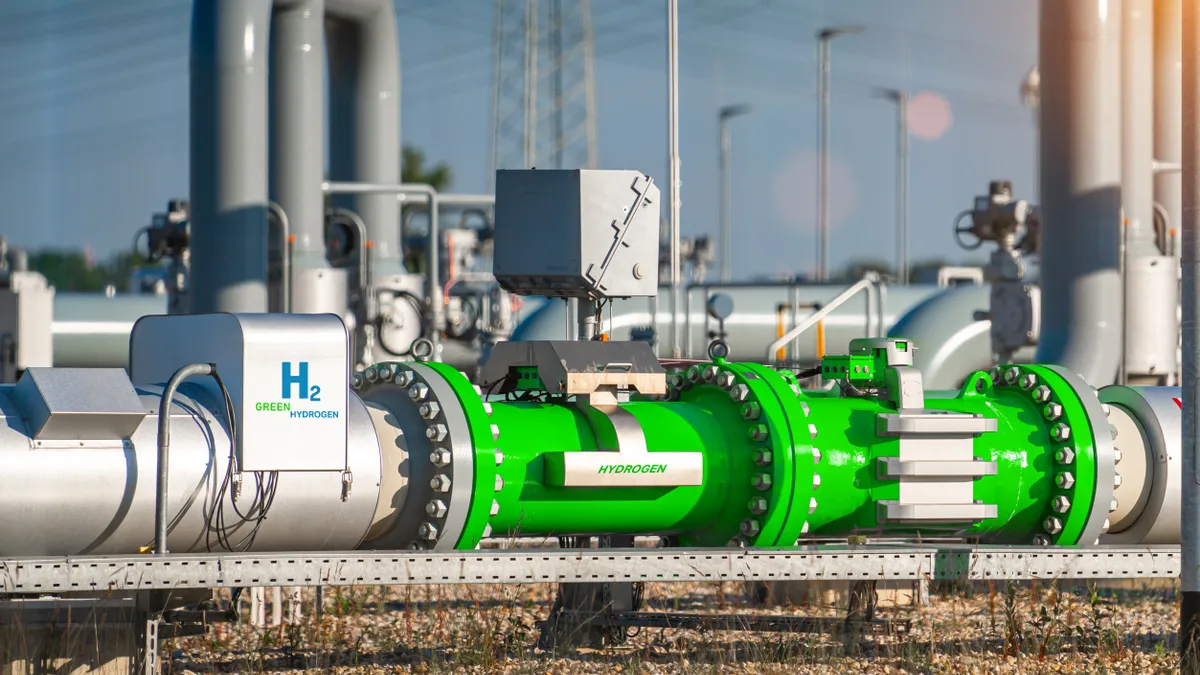Dive Brief:
-
Using hydrogen to decarbonize home heating is likely not a viable long-term strategy, raising questions about the role hydrogen blending could play in the energy transition, according to the Environmental Defense Fund.
-
A report by the think tank Switchbox, commissioned by EDF, concluded that replacing New York state's natural gas supplies with carbon-free hydrogen would require four times more renewable energy than the state currently aims to build to achieve full decarbonization by 2050. Using heat pumps instead would use 87.2% less electricity, according to the report, Blending Hydrogen & Natural Gas: A Road to Nowhere for New Yorkers.
-
Attempts to use hydrogen for home heating could drive up prices for consumers and potentially rob needed renewable energy — and hydrogen fuels — from other higher-priority sectors, EDF senior attorney Erin Murphy said.
Dive Insight:
Gas utilities might like the idea of using green hydrogen to reduce their carbon emissions and meet internal climate goals, but EDF says this strategy likely won't pan out.
Murphy said existing New York state policies express a clear preference for the use of green hydrogen — which is made by using renewable energy and electrolysis to derive hydrogen from water. Hydrogen can also be made from fossil fuels, but this is typically associated with greater carbon emissions. But for the state to fill its existing natural gas systems with 20% green hydrogen and 80% natural gas, the level utilities assert local pipelines and home appliances can handle without changes, it would need to build an additional 48 TWh of new renewable energy, according to models developed by Switchbox. And a 20% blend would only reduce emissions from gas-heated buildings by 7%, Switchbox said.
Eventually replacing 100% of the state's natural gas supplies would require New York to quadruple its 2050 renewable energy target. That goal would probably prove unrealistic given the amount of land this would require and the existing difficulties energy developers face when trying to site and permit new renewable energy projects, Switchbox research director Max Shron said.
“Could you turn over enough New York state land to produce the electricity for that much hydrogen? You could, but you would be displacing other things we want to do like EVs,” Shron said. “It's hard enough to build grid-scale solar in New York. To get to the level you need to do this is pretty infeasible.”
Although the Switchbox report focused exclusively on New York state, Shron said the report's conclusions would likely hold true for other states as well. Regions with access to salt domes, which could be used to reduce losses associated with storing hydrogen, might be exceptions to this rule, he said.
Given that replacing all natural gas with hydrogen would likely prove impossible, Murphy argued that using blending as an interim transition strategy probably won't make financial sense.
A number of New York utilities have filed requests with the state public service commission for permission to pilot 20% blending programs, Murphy said, noting that these utilities have clear financial incentives to extend reliance on natural gas and justify continued use of their pipelines.
Although none of these requests have yet been approved, Murphy said the Switchbox report suggests a gradual transition via blending would require utilities to replace miles of infrastructure and force homeowners and businesses to replace appliances with more compatible devices. These investments would prove wasted if the ultimate 100% goal cannot be realized, she said.
And in the meantime, she said she worried that the blending projects will distract from more efficient options such as heat pumps, while taking up scarce renewable resources that are needed in other sectors.
Hydrogen “makes sense where they need a fuel they can combust — things like steel production or airplane fuel,” Murphy said. “But for a home on a block in New York state you can heat comfortably with a heat pump, you don't need hydrogen.”














